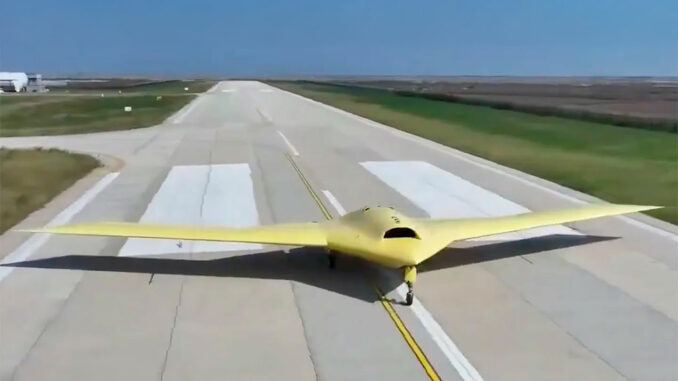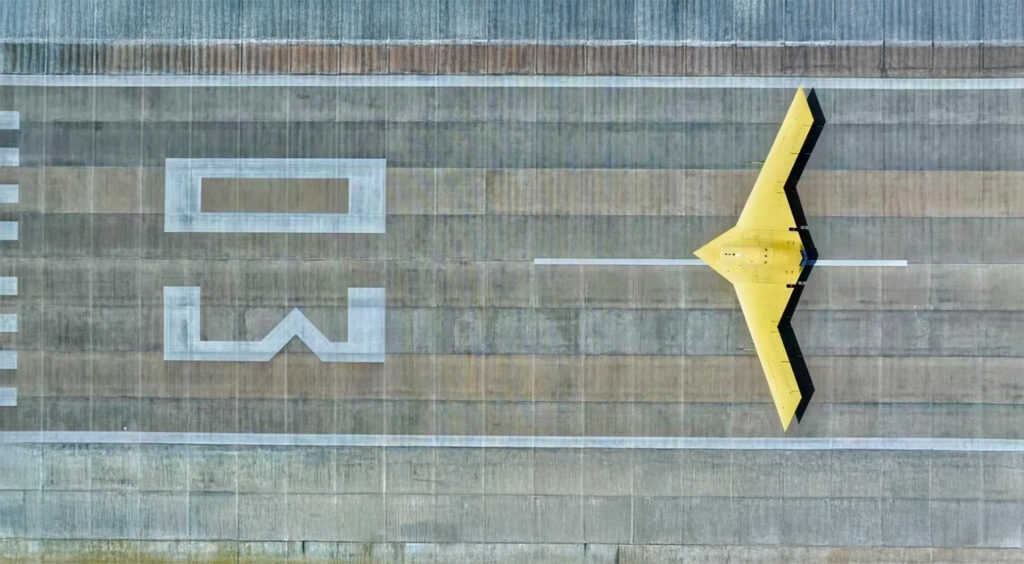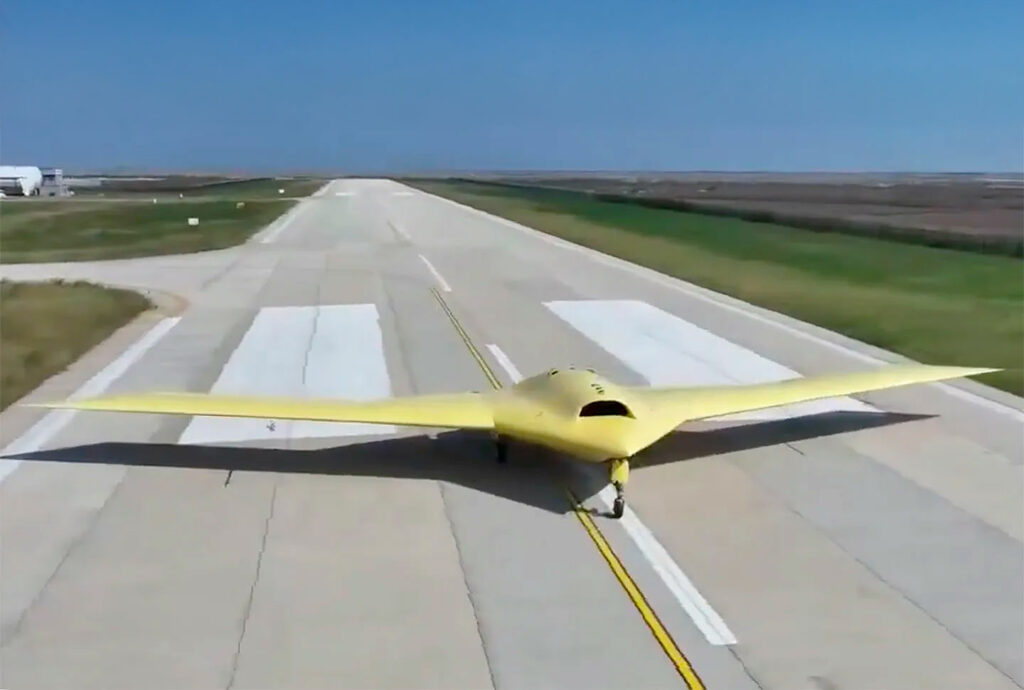
China unveils the CH-7 stealth drone, a long-endurance aircraft designed for ISR and strike missions in hostile airspace.
China has unveiled its new stealth drone, the CH-7, also known as the Caihong-7 or Rainbow-7. Designed for surveillance, reconnaissance and autonomous strikes, this large-scale drone is optimized for high-altitude flight, enabling it to penetrate hostile areas undetected. The CH-7’s stealthy structure and long-endurance capabilities make it a key tool for People’s Liberation Army (PLA) strategic missions, particularly in the maritime context of the Pacific Ocean.

Stealth design and operational capabilities of the CH-7
The CH-7, developed by China Aerospace Science and Technology Corporation (CASC), is a high-tech drone dedicated to intelligence, surveillance and reconnaissance (ISR) missions, and potentially to autonomous strikes. With a wingspan of 26 meters and a length of 10 meters, the CH-7 features a flying-wing design similar to Northrop Grumman’s X-47B UAV, with specific adaptations to enhance its stealth.
The CH-7’s stealth capability is based on a flying-wing design combined with a low-observability exhaust and a dorsal air intake to reduce its radar signature. These features, combined with an integrated turbofan engine, enable the drone to operate at high altitudes while avoiding detection by enemy defense systems. This type of design is also optimized for infrared signature reduction, making the CH-7 particularly difficult to locate.
Provisional specifications for the CH-7 indicate a maximum speed of 926 km/h and a continuous flight capability of 15 hours, enabling the PLA to carry out extended missions over strategic areas. Its internal load capacity enables it to carry sophisticated weapons and sensors, reinforcing its role as an advanced surveillance and strike drone.
Strategic applications: a key tool for operations at sea
The CH-7 is particularly well suited to maritime surveillance missions. Thanks to its long endurance and ability to operate at high altitudes, it can cover vast areas of the Pacific, enabling continuous surveillance of enemy naval activities. In this context, the drone provides crucial intelligence for targeting and tracking hostile warships or units, an essential capability in the increasingly tense South China Sea.
The CH-7’s range positions it as a relay for ground-based long-range missiles, enabling it to guide precision strikes against distant targets without requiring the direct presence of fighter aircraft. In addition, its ability to integrate with coastal defense systems gives China a strategic advantage in deterring naval incursions into disputed waters. These features make it a valuable asset for the PLA in power projection operations, particularly in the face of Asia-Pacific military alliances.
Technical and economic challenges of CH-7 production
The development of the CH-7 represents not only a strategic investment for China, but also a technical and financial challenge. Large-scale stealth drones require advanced propulsion and thermal management technologies to ensure their stealth. Production of the CH-7, with its 26-meter wingspan, requires costly materials and processes to maintain low weight while withstanding the stresses of prolonged high-altitude flight.
Estimated costs for the development of stealth drones in this category typically exceed 100 million euros per unit, taking into account research expenditure, flight tests and production adjustments. However, China could amortize these costs by offering the CH-7 for export, a strategy that CASC has already successfully implemented for other UAVs in the Caihong series.
Exporting these UAVs could strengthen China’s position on the international arms market, offering allied countries access to stealth technologies not readily available in the West. However, the high cost and technical requirements of maintaining a drone of this size and complexity could limit potential buyers.
Commercial positioning and implications for international security
As a major supplier of military UAVs, China could offer the CH-7 for export, consolidating its presence in the UAV market. This strategic positioning enables China to bypass Western export restrictions, notably those imposed by the Missile Technology Control Regime (MTCR), which limit the sale of armed UAVs to non-allied countries.
As a high-capacity stealth drone, the CH-7 offers new functionalities for the international arms market. Although its commercialization remains uncertain, putting it into service with the PLA could demonstrate its reliability and efficiency, attracting potential customers. In this case, China could extend its military influence in Asia, the Middle East and Africa, regions where demand for advanced defense technologies is growing.
However, the proliferation of such technologies could also intensify regional tensions, by giving states an increased capacity for long-range precision strikes. The geopolitical implications of such proliferation are significant, as they could prompt other military powers to bolster their own stealth drone arsenals.

The CH-7 demonstrates China’s advanced technology
The presentation of the CH-7 marks a significant step forward for China’s military industry. By developing a long-endurance stealth drone capable of carrying out reconnaissance and strike missions, China is demonstrating its ability to integrate cutting-edge technologies into its armed forces. This program demonstrates the acceleration of China’s progress in combat drone systems, positioning the country as a key player in this strategic sector.
The CH-7 is not just a military tool for the PLA; it also represents a strategic asset for China’s power projection and a potential business opportunity. If China succeeds in industrializing the CH-7 for export, it could extend its military and technological influence internationally, while redefining stealth and performance standards in the field of high-endurance combat UAVs.
War Wings Daily is an independant magazine.